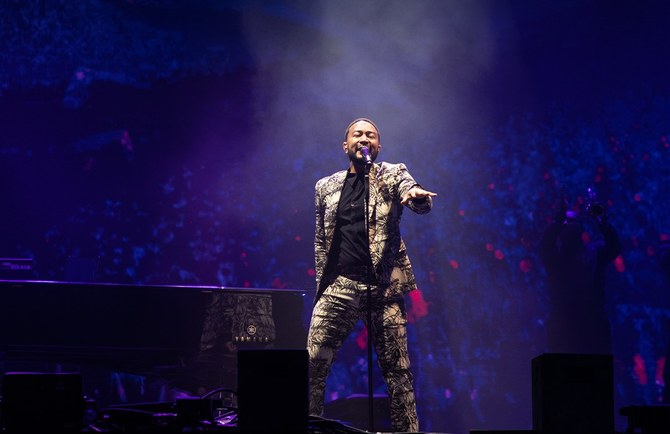DUBAI: US singer-songwriter John Legend made a resounding comeback to the Middle East with his performance at the final day of the Diriyah E-Prix races in Saudi Arabia.
From up-tempo, dance tracks like “All She Wanna Do” to his famous ballad “All of Me,” Legend had the packed audience screaming for more and singing along to every word.
Moroccan American rapper French Montana and Egyptian singer-songwriter Mohamed EL-Hamaki also took to the stage on Saturday night.
Returning for its ninth season and after a two-week break following an opener in Mexico City, the Diriyah E-Prix kicked off on Friday in the Saudi capital with two days of racing on the Diriyah Street Course.












